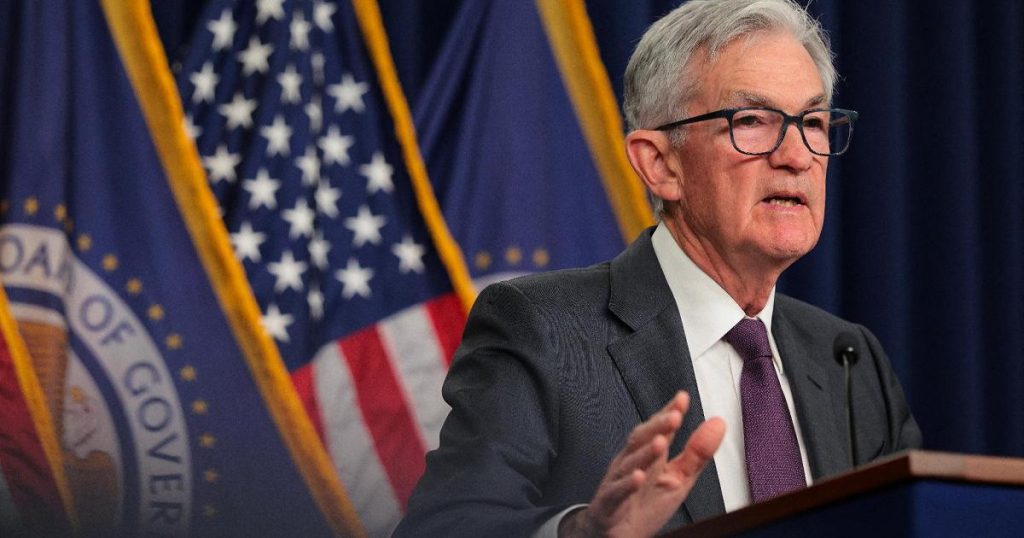Federal Reserve Leaves Interest Rates Unchanged
This evening, the Federal Reserve, as anticipated by most analysts and despite direct requests from President Trump, decided to keep interest rates unchanged at 4.5%. The decision was announced by Jerome Powell, the Fed’s chairman, who spoke for the first time following the installation of the new administration. Powell emphasized that the economy remains strong and has shown significant improvement in recent years. He projected a GDP growth of over 2% in 2024, indicating that the current monetary policy is well positioned to navigate the risks and uncertainties that lie ahead.
Powell’s Stance: A Wait-and-See Approach
Powell’s statement highlighted a cautious and deliberate approach, often referred to as the "Wait-and-See" phase. "We have no haste to intervene," he said, underscoring the need to observe how various policies, including tariffs, immigration, budgetary measures, and regulatory changes, will unfold and impact the economy. Powell reiterated that the Federal Reserve must let these policies articulate themselves before making any plausible evaluations. When asked about President Trump’s recent demands for an immediate rate cut, Powell firmly stated that it was not appropriate to comment on the president’s statements and confirmed that there had been no contact with Trump. This stance underscores the Fed’s commitment to maintaining its independence and basing its decisions on economic data rather than political pressure.
Trump’s Criticism and Economic Strategy
President Donald Trump, known for his direct and often critical approach to monetary policy, expressed his disappointment with the Fed’s decision. In a social media post, Trump asserted that "Jay Powell and the Fed have failed to stop the problem they created with inflation." He outlined a series of measures he plans to take to address the economic issues, including reducing regulations, promoting American energy production, rebalancing international trade, and revitalizing the U.S. manufacturing sector. Trump’s strategy is to intervene through fiscal and trade policies, believing that his actions will have a more immediate and effective impact on inflation and economic growth. He also criticized the Fed’s role in regulating banks, adding that their performance has been "terrible." Trump’s aim is to make the United States strong and financially robust once again.
Fed’s Monetary Policy Committee’s Statement
The Federal Reserve’s Monetary Policy Committee (FOMC) released a statement affirming its readiness to adapt the stance of monetary policy if any risks emerge that could hinder the achievement of its objectives. The committee’s assessments will be based on a broad range of information, including labor market conditions, inflationary pressures and expectations, and financial and international developments. This comprehensive approach ensures that the Fed remains vigilant and flexible in response to changing economic conditions. The latest rate cut in December had already addressed some of the economic concerns, with inflation falling and the labor market remaining solid. These factors, combined with the robustness of the American economy, suggested that further stimuli were not immediately necessary, aligning with the market’s expectations for a pause in rate adjustments.
ECB Decision Looms: Expected Rate Cut
While the American central bank maintains a watchful attitude, the focus now shifts to the European Central Bank (ECB), which is expected to make its first policy decision of the year tomorrow. Analysts predict that the ECB will lower the cost of money, with a 0.25% reduction being the most likely. However, the possibility of a more substantial cut of 0.50% remains open. The ECB has already made four rate cuts since June, and this could be the fifth in a series designed to stimulate economic growth in the Eurozone. The diverging paths of the ECB and the Federal Reserve have raised questions about the Eurotower’s comfort with the growing gap between the two major central banks. The upcoming press conference, where President Christine Lagarde will speak, is anticipated to provide clarity on the ECB’s strategy and its views on the global economic landscape.
Political Risks and Potential ECB Actions
The current political risks, especially those stemming from the potential tariffs threatened by the Trump administration, could influence the ECB’s decisions. Additionally, any new phases of political instability in key European economies like Germany and France might prompt the ECB to adopt more decisive and expansive monetary policies. Analysts suggest that the ECB could either accelerate its rate cuts to take effect by the summer or implement more significant reductions of half a point to bolster economic growth. The impact of American duties on the Eurozone’s already weak growth and inflation rates is a major point of uncertainty. If these risks materialize, the ECB might find itself compelled to move beyond the ‘neutral’ area and into an expansive monetary policy to stabilize the region’s economy.












